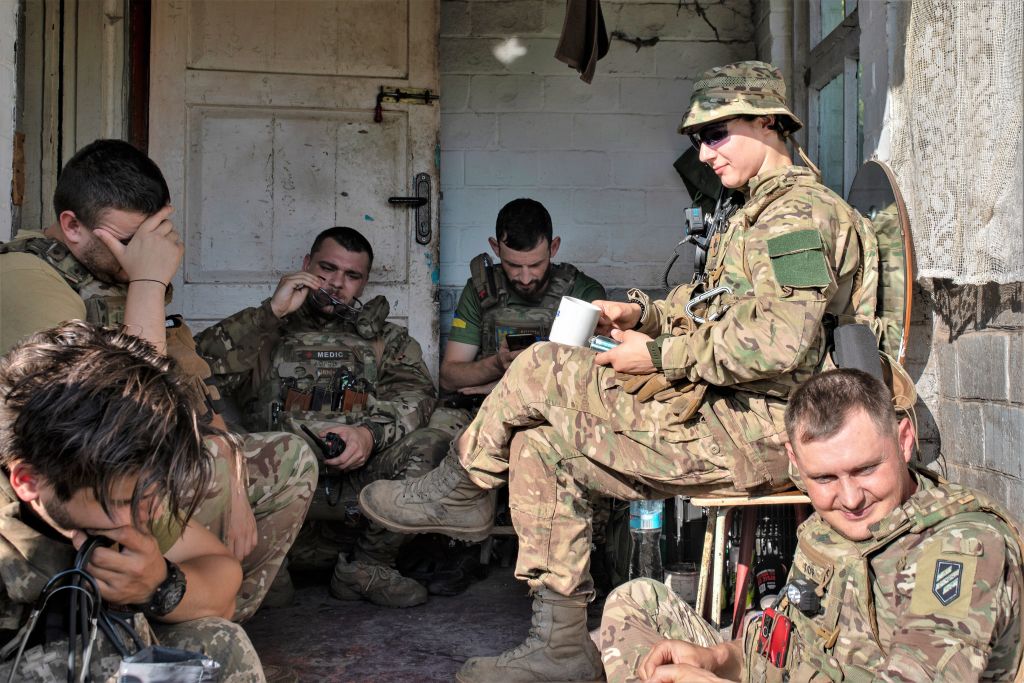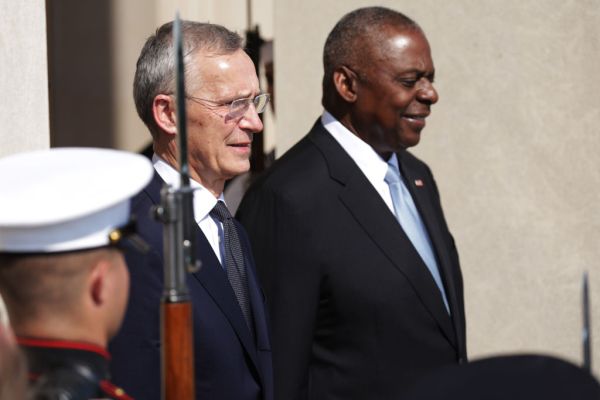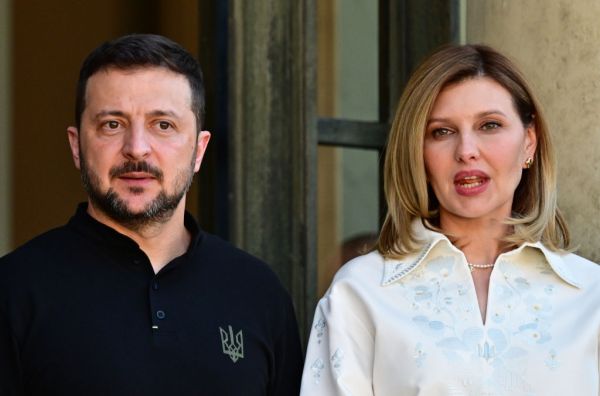Ukraine and its NATO allies hoped this spring’s long-awaited counteroffensive against Russia would resemble the success of counterattacks in the Kharkiv and Kherson regions last year. But advancing Ukrainian forces quickly came up against dug-in Russian forces and have since made incremental gains at enormous costs.
Russian President Vladimir Putin’s declaration on Sunday that the operation had “failed” is one thing—but even Ukrainian President Volodymyr Zelensky admits the campaign hasn’t gone entirely to plan.
What are advancing Ukrainian forces up against?
Ukrainian military planners spent months preparing for the counteroffensive. So did Russian forces. At the southern and eastern frontlines, retreating Russian troops took high ground positions, built barriers and bunkers, deployed heavy artillery, and laid dense minefields.
With limited technology, Ukrainian forces have had to clear those minefields manually—a painstaking and dangerous task. Instead of advancing on Western provided armored vehicles—namely American Bradleys and German Leopard tanks—Ukrainian troops have been forced to dismount and continue on foot, making it more difficult to evacuate the wounded and resupply artillery.
Russian forces, meanwhile, are able to re-mine previously cleared swaths of land using drones. Having established effective air superiority along the front, they’ve also used drones and attack helicopters—some of which carry missiles with a 5-mile range—to target advancing Ukrainian troops.
Russia’s superior manpower has also posed a challenge to Ukraine throughout the conflict, and the current counteroffensive is no exception. Military theorists posit that an attacking force should have three soldiers to every one of their defending adversary’s—an advantage the Ukrainian side decisively lacks as it tries to reclaim territory.
“The minefields, and prearranged artillery, and obstacles that the Russians set up are really effective,” says Dmitri Alperovitch, founder of the Silverado Policy Accelerator think tank, who recently returned from a trip to Ukraine.
These early setbacks are taking their toll. A Ukrainian infantryman fighting near the Russian-occupied city of Donetsk claimed his unit was losing four to five men per every 100 meters gained. “As soon as there is an attack, Russian artillery starts to work on us with everything it has, and they hammer our positions from front to back,” he told the Kyiv Post. “As long as we are standing and holding on, we can say there are no losses; there may be some light injuries. As soon as we move forward, there are hefty losses.”
Does Ukraine have any gains to show for the losses?
What Russia calls a failed campaign, Ukraine says are early stumbling blocks. Ukrainian forces have been making incremental progress since the counteroffensive’s start, and this week reportedly began the “main thrust” of the campaign. The Institute for the Study of War (ISW) said Wednesday that Ukrainian troops appeared to have “broken through certain pre-prepared Russian defensive positions” in the Zaporizhzhia region. The progress brings Ukraine one step closer to the Sea of Azov—reaching it would cut off Russians on the eastern and southern front lines. Geolocated footage analyzed by the ISW on Tuesday found that Ukrainian forces had also made “tactically significant gains” near Bakhmut.
“It’s not a stalemate,” White House national security spokesman John Kirby told reporters Monday. “They’re not just frozen. The Ukrainians are moving.”
Ukrainian advances have also forced Russia to expend significant resources to defend its positions. Ukrainian Deputy Defense Minister Hanna Maliar claimed Tuesday that Russian troops were dying at a rate eight times higher than Ukrainian soldiers near Bakhmut and more than five times higher in the directions of Berdiansk and Mariupol, defying expectations that the advancing side would take more casualties. The Dispatch could not independently verify those casualty rates.
At the same time, Ukraine is using its longer-range capabilities to target Russian forces and equipment beyond the front lines. Ukraine hit Crimea with a wave of drone attacks over the weekend, successfully striking a weapons depot. “They’re certainly impacting Russian logistics and Russian command centers,” says Alperovitch. “How much of an impact that’s going to have at the front lines is unknown at the moment though.”
What does Ukraine need to overcome dug-in Russian positions?
In what has often been described as a war of artillery, the main priority for Kyiv’s Western supporters will be keeping a flow of shells going to the front. But that’s easier said than done. Faced with shortages of 155-millimeter shells—the U.S. has provided more than 1 million and European countries some 350,000 to date—the Pentagon has begun supplying the Ukrainian military with controversial cluster munitions as a stop-gap measure. The bombs release smaller explosives as they detonate, upping the risk of friendly fire and civilian harm.
Ukraine’s military has also asked the West for more mine-clearing equipment, which has been the target of Russian fire and some of which is in short supply. A senior Ukrainian official told the Washington Post this month that Ukraine had received less than 15 percent of the demining equipment it had requested from its NATO backers prior to the counteroffensive.
The counteroffensive’s early obstacles have also highlighted the difficulty of going on the offense without first controlling the air. Ukraine has long requested U.S.-made F-16 fighter jets to replace its own Soviet-era fleet, but logistical challenges abound. The jets have heavy maintenance and training requirements—and require upgrades to Ukraine’s existing airfields—and a coalition of Western countries is set to begin teaching Ukrainian pilots to fly them next month.
Plus, the U.S., which controls the jets’ export, has yet to approve their transfer. Asked about the delay on Sunday, Secretary of State Antony Blinken pointed to those operational challenges. “It’s not just the equipment itself. It’s the training. It’s the maintenance. It’s the ability to use it in combined arms operations,” he said from a security conference in Aspen. “All of that takes time. If a decision were made to actually move forward on the F-16s tomorrow, it would be months and months before they were actually operational.”
Ukraine is reportedly also considering acquiring Swedish-made JAS 39 Gripens, which have never been used in direct combat but carry air-to-air missiles capable of out-ranging those used by jets flown by Russia. The fighter aircraft are considered easier to fly and maintain than the U.S.-made F-16s.
What will all this mean for Ukraine’s long-term security?
It’s still too soon to say how the counteroffensive’s outcome might shape the trajectory of the overall conflict. But in Kyiv, officials are thinking beyond short-term territorial gains. Creating lasting deterrence after the war is a priority, which is why this month’s NATO summit in Vilnius, Lithuania, proved particularly disappointing to Ukraine. A communiqué from the two-day gathering briefly affirmed Ukraine’s eventual membership but lacked a timeline for actually making that happen, stoking frustration among Zelensky and other Ukrainian officials.
“NATO continues to be quite wishy-washy on any type of commitment to Ukraine,” Alperovitch says. “And frankly, the phrasing that is being used, ‘that Ukraine will join NATO once the war is over if conditions are met,’ is really giving veto power to Russia over Ukraine’s NATO membership, because they can simply keep the war going indefinitely to prevent the invitation from going out to Ukraine.”









Please note that we at The Dispatch hold ourselves, our work, and our commenters to a higher standard than other places on the internet. We welcome comments that foster genuine debate or discussion—including comments critical of us or our work—but responses that include ad hominem attacks on fellow Dispatch members or are intended to stoke fear and anger may be moderated.